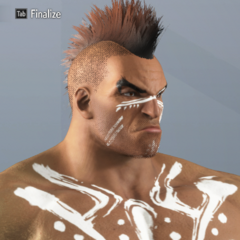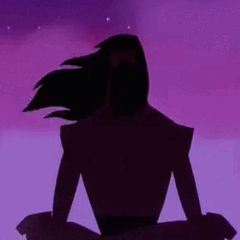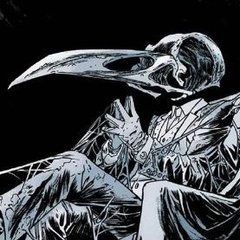-
Posts
269 -
Joined
-
Last visited
Recent Profile Visitors
1,378 profile views
Miðgarðsorm's Achievements

Level 11 (11/20)
1.3k
Reputation
-
 Miðgarðsorm reacted to a post in a topic:
Video Game Discussion Thread vol. 2
Miðgarðsorm reacted to a post in a topic:
Video Game Discussion Thread vol. 2
-
 Miðgarðsorm reacted to a post in a topic:
The Street Fighter VI Story Thread: Shadaloo Died so Luke Could Live!
Miðgarðsorm reacted to a post in a topic:
The Street Fighter VI Story Thread: Shadaloo Died so Luke Could Live!
-
 Miðgarðsorm reacted to a post in a topic:
The Street Fighter VI Story Thread: Shadaloo Died so Luke Could Live!
Miðgarðsorm reacted to a post in a topic:
The Street Fighter VI Story Thread: Shadaloo Died so Luke Could Live!
-
 Miðgarðsorm reacted to a post in a topic:
The Street Fighter VI Story Thread: Shadaloo Died so Luke Could Live!
Miðgarðsorm reacted to a post in a topic:
The Street Fighter VI Story Thread: Shadaloo Died so Luke Could Live!
-
 Shakunetsu reacted to a post in a topic:
The Street Fighter VI Story Thread: Shadaloo Died so Luke Could Live!
Shakunetsu reacted to a post in a topic:
The Street Fighter VI Story Thread: Shadaloo Died so Luke Could Live!
-
 Lord_Vega reacted to a post in a topic:
The Street Fighter VI Story Thread: Shadaloo Died so Luke Could Live!
Lord_Vega reacted to a post in a topic:
The Street Fighter VI Story Thread: Shadaloo Died so Luke Could Live!
-
 biachunli reacted to a post in a topic:
The Street Fighter VI Story Thread: Shadaloo Died so Luke Could Live!
biachunli reacted to a post in a topic:
The Street Fighter VI Story Thread: Shadaloo Died so Luke Could Live!
-
 BornWinner reacted to a post in a topic:
The Street Fighter VI Story Thread: Shadaloo Died so Luke Could Live!
BornWinner reacted to a post in a topic:
The Street Fighter VI Story Thread: Shadaloo Died so Luke Could Live!
-
 bakfromon reacted to a post in a topic:
The Street Fighter VI Story Thread: Shadaloo Died so Luke Could Live!
bakfromon reacted to a post in a topic:
The Street Fighter VI Story Thread: Shadaloo Died so Luke Could Live!
-
 Darc_Requiem reacted to a post in a topic:
The Street Fighter VI Story Thread: Shadaloo Died so Luke Could Live!
Darc_Requiem reacted to a post in a topic:
The Street Fighter VI Story Thread: Shadaloo Died so Luke Could Live!
-
 ShockDingo reacted to a post in a topic:
The Street Fighter VI Story Thread: Shadaloo Died so Luke Could Live!
ShockDingo reacted to a post in a topic:
The Street Fighter VI Story Thread: Shadaloo Died so Luke Could Live!
-
 CESTUS III reacted to a post in a topic:
The Street Fighter VI Story Thread: Shadaloo Died so Luke Could Live!
CESTUS III reacted to a post in a topic:
The Street Fighter VI Story Thread: Shadaloo Died so Luke Could Live!
-
 Miðgarðsorm reacted to a post in a topic:
The Street Fighter VI Story Thread: Shadaloo Died so Luke Could Live!
Miðgarðsorm reacted to a post in a topic:
The Street Fighter VI Story Thread: Shadaloo Died so Luke Could Live!
-
 Phantom_Miria reacted to a post in a topic:
The Street Fighter VI Story Thread: Shadaloo Died so Luke Could Live!
Phantom_Miria reacted to a post in a topic:
The Street Fighter VI Story Thread: Shadaloo Died so Luke Could Live!
-
 BornWinner reacted to a post in a topic:
The Street Fighter VI Story Thread: Shadaloo Died so Luke Could Live!
BornWinner reacted to a post in a topic:
The Street Fighter VI Story Thread: Shadaloo Died so Luke Could Live!
-
Ryoredcyclone pointed out a 2019 admission by AKIMAN, who revealed that Chun-Li's final words in her SF2 ending 「ふつうのおんなのこになーろうっと」Futsū no onna no ko ni narō tto "I want to become an ordinary girl" were pulled straight from the final declaration of the Candies, an enormously popular idol trio in the Seventies who quit the music business abruptly at the height of their fame with the phrase 「普通の女の子に戻りたい」 Futsū no onna no ko ni modoritai "We want to return to being ordinary girls".
-
 Miðgarðsorm reacted to a post in a topic:
The Street Fighter VI Story Thread: Shadaloo Died so Luke Could Live!
Miðgarðsorm reacted to a post in a topic:
The Street Fighter VI Story Thread: Shadaloo Died so Luke Could Live!
-
 Miðgarðsorm reacted to a post in a topic:
The Street Fighter VI Story Thread: Shadaloo Died so Luke Could Live!
Miðgarðsorm reacted to a post in a topic:
The Street Fighter VI Story Thread: Shadaloo Died so Luke Could Live!
-
As @BornWinneralready linked Ryoredcyclone's Twitter post detailing that, 勝負あり Shōbu ari (far right, Honda's left shoulder): "victory" in Classical Japanese (literally, "the match is set"). The same writing was flashed in the background of Honda's SF2 stage. 日本一 Nippon ichi (or Nihon ichi; second right, Honda's back), "Best in Japan". Incidentally, it's the same catchphrase Mai Shiranui says during her winpose since Fatal Fury 2. 大一番 Ōichiban (second left, Honda's right shoulder), "The great first". The decisive match in sumō to determine the championship. 満員御礼 Man'in onrei (far left, Honda's left side), "Thanks for the full house". Banners with this writing are shown at sumō tournaments when the house is indeed full. 大入 Ōiri (Honda's shirt), "large attendance". The same writing was shown on the red lantern in the background of Honda's SF2 stage. Of course I remember, having already written about it at the time. It was Ippei Kuri's manga Kurenai Sanshirō (1968), aka Judo Boy in France, Italy and Spain and O Judoca in Brazil. It was adapted into an anime series in 1969, with many details changed. The original story was the first ever in Japan to depict a muay thai villain, who killed Sanshirō's father but lost an eye in the process (two years before Kajiwara started to use so many muay thai villains in his manga who cemented the image). So Sanshirō is searching for his dad's killer but only has the clue that the killer is one-eyed. Every episode he encountered an one-eyed villain who bothered someone somewhere, but it was never his foe. Yes, the father who took the eye of his muay thai-user killer before dying is a detail Capcom recycled for DAN. Every episode, Sanshirō ALWAYS jumped into action by grabbing his kimono and wearing it in the air, so we know that Ryu should've referenced that in SF2. You also can see Abel's tornado throw in the opening. In the original manga, the villain already used the rolling heel kick who then Kajiwara copied in his Kurenai no chōsensha five years later. Incidentally, Ippei Kuri then became TATSUNOKO's third president. He died this July at 83.
-
 Miðgarðsorm reacted to a post in a topic:
The Street Fighter VI Story Thread: Shadaloo Died so Luke Could Live!
Miðgarðsorm reacted to a post in a topic:
The Street Fighter VI Story Thread: Shadaloo Died so Luke Could Live!
-
That's purely coincidental because Utena herself largely took from Oscar to begin with. Even the pink hair can be traced back to Yawara!'s Belgian jūdōka/supermodel Belkens, who in turn was based upon the real Belgian champion Ingrid Berghmans, one of the most decorated women in jūdō in the Eighties. Berghmans was a sensation in Japan because she was 180 cm (5'9'') and a frequent subject in magazines' covers, so it's not so difficult to imagine why Urasawa decided to have a jūdōka who was ALSO a supermodel in his manga.
-
 Miðgarðsorm reacted to a post in a topic:
The Street Fighter VI Story Thread: Shadaloo Died so Luke Could Live!
Miðgarðsorm reacted to a post in a topic:
The Street Fighter VI Story Thread: Shadaloo Died so Luke Could Live!
-
 Miðgarðsorm reacted to a post in a topic:
The Street Fighter VI Story Thread: Shadaloo Died so Luke Could Live!
Miðgarðsorm reacted to a post in a topic:
The Street Fighter VI Story Thread: Shadaloo Died so Luke Could Live!
-
Never, lol. Interestingly, it's Honda's report about his and Blanka's encounter with ORO. "The locals called him Oro ("gold"). They said that once, if you entered the forest, he often came to snatch your food and your wine, but his last sighting around the village we were staying in was some 15 years before, and he had not been seen since. During our fifth day in the jungle, my companion Jimmy was more lively than his usual, and at one point looked like he had found something and suddenly took a fighting stance staring at the river. That instant, the water's surface exploded and out of it emerged an enormous fish, about 3 metres long, and under it a shining golden-coloured man who held up the fish with a single arm; he fled as if the water didn't offer any physical resistance. The next day, when we talked about what we had seen the day before in another village much deeper in the forest, we understood we had met the fabled Amazonian hermit named Oro. I thought I'd like to fight him once. Jimmy, however, didn't remember anything except the fish, which, according to him, was a delicious pirarucu¹." ¹ Pirarucu, or Arapaima (Arapaima gigas) is the giant fish appearing in Blanka's stage since SF2.
-
Looks like Capcom finally gave a proper name to Retsu's jumping kick. 破戒蹴り Hakaigeri, "Precept breaking kick". That's both a wordplay (usually hakai, when written as 破壊 hakai, means "destruction") and a good reference to Retsu's nature as a "depraved" monk¹ . In Japanese Buddhist doctrine, 破戒 hakai means to consciously break one or more of the precepts. It's a word reserved for the clergy, in this case a Buddhist monk, but it also can be applied to other religions, and in a more broad sense can also mean the breaking of any vow. Tōson Shimazaki's 1906 novel The Broken Commandment's original title was indeed 破戒 Hakai, and here the protagonist breaks the promise made to his late father. Anyway, we don't know what precept(s?) did Retsu violate: his CRI profile just said he was excommunicated for being "turbulent and frequently engaging in private fights", but the list of vows for a Buddhist monk is LONG. If we simply go for the Five Precepts, we know that he likes to drink, as indeed in his Side Story Miharu chastises him because he's drinking sake in the afternoon on a sacred ground where it's already prohibited (lol)... ¹ Capcom repeatedly called Retsu 破戒僧 hakaisō, "depraved monk" (literally, "a monk who breaks the precepts"), even in his recent Side Story, とある破戒僧の旅 To aru hakaisō no tabi, "The journey of a certain depraved monk".
-
Hello, @biachunli! Yes, they ARE actually saved in archive.org, just a bit harder to find than usual... Here you go. There are Side Stories about the newcomers of SFIV. C. Viper "Her Names"; Abel "Before father's grave"; Rufus "Looking for the blonde"; El Fuerte "The super dynamic cook!"; Lauren (Viper's daughter) "Her Family"; Rufus & Candy "Rufus's treat". I don't have the time to translate these atm, but I know you can do so yourself.
-
Of course it hasn't, it's BASED ON A WORDPLAY. 武神 Takegami (god of martial arts) can also be read as Bushin. Bushin ryū. They basically used 隆 Ryū (his name) instead of 流 ryū "style"... It wouldn't. Gobalsky wasn't a link to HnK's Gōda; rather, it was to Sakigake! Otokojuku's シベリアのゴバルスキー Shiberia no Gobaruskī, "Gobalsky from Siberia". He fought with his wolves and was a cowardly villain who then reformed after his defeat and became a comic relief when he enrolled in the Otokojuku. Gobalsky himself was a parody of the boss/father of the Kiba clan in HnK, who could turn his body into steel. Gōda could have influenced Zangief, but definitely not with his name. Well, it's more complicated than that. Cerdo in Spanish means "dirty", "slob", "pig". Its feminine form cerda also means... yeah, "slut". Imagine a good Vulcano Rosso la Troia. Doesn't sound so good anymore, doesn't it? 🤣
-
Capcom and the attention to details. Remember when on his character profile Capcom stated that Carlos is no longer using his "Wheel throw" (orig. 車輪投げ Sharin nage, "wheel throw", aka the classic Tomoe Nage from Jūdō) because doing it gave him backaches? Well, he's still doing it, just more on his right side... So the scabbard with the katana inside on his back doesn't hurt him anymore. 😆
-
Not... exactly. Kasa has at least five different meanings, all written with different kanjis. The one they used in the original Japanese interview wasn't "umbrella" (傘 kasa) but the 笠 kasa for "HAT". Granted, it's the traditional Japanese hat which resembles an umbrella, but it's not the same thing.






